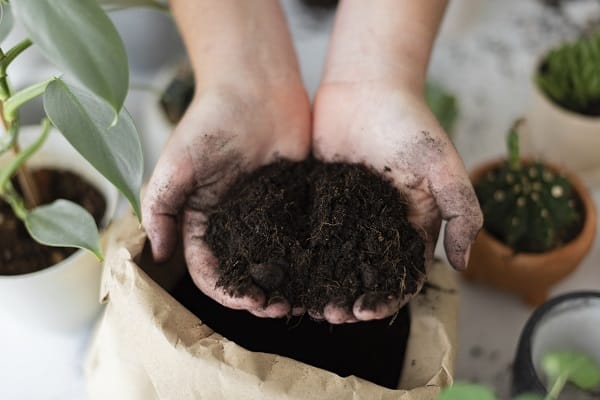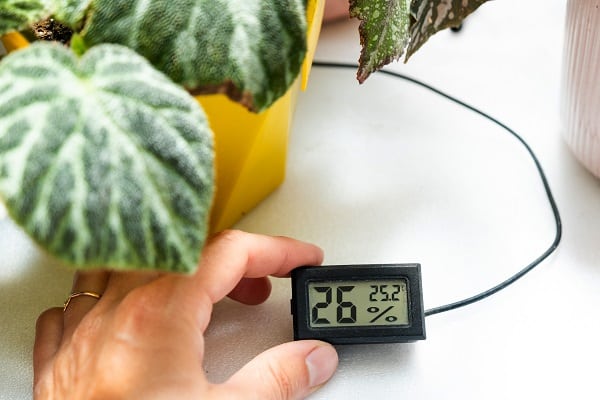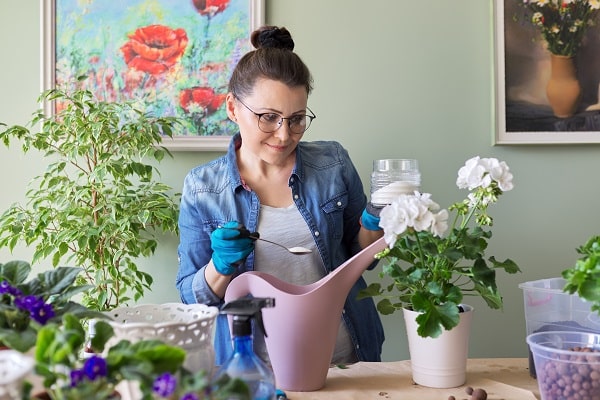Houseplants serve as living art pieces, adding a touch of nature’s vibrancy to your indoor space. They not only enhance the aesthetic appeal of your home but also purify the air and foster a sense of tranquility. However, nurturing these green companions can sometimes be a daunting task, especially for novices. This post aims to shed light on the common reasons why your houseplants die and easy-to-follow advice on how to revive and maintain them. By gaining a deeper understanding of your plants’ needs and learning to avoid common care mistakes, you can cultivate a thriving indoor garden.
Contents
- 1 Decoding Your Houseplants’ Needs
- 2 Overwatering: A Common Pitfall
- 3 Underwatering: The Silent Threat
- 4 Illuminating The Importance Of Light
- 5 Soil Quality: The Foundation Of Plant Health
- 6 Temperature And Humidity: Crafting The Ideal Environment
- 7 Pests And Diseases: Invisible Adversaries
- 8 Neglect: The Consequences of Inattention
- 9 Over-Fertilization: Too Much Of A Good Thing
- 10 Be Mindful Of The Different Reasons Your Houseplants Die!
Decoding Your Houseplants’ Needs
Each houseplant is a unique entity with specific requirements that mirror its natural habitat. Succulents, for instance, are desert dwellers that thrive in dry, sunny conditions, while ferns, native to shady forest floors, prefer a moist, dim environment. Recognizing and catering to these distinct needs is the cornerstone of successful plant care. It’s essential to research your plants, understand their native environments, and strive to replicate those conditions within your home.
The significance of mimicking a plant’s natural habitat is often underestimated. A cactus, accustomed to the arid desert, will not flourish under the same conditions as an orchid, which thrives in the humid, tropical rainforest. By creating an environment that closely mirrors your plant’s natural habitat, you set the stage for optimal growth and vitality.
Overwatering: A Common Pitfall
Overwatering is a frequent misstep among houseplant enthusiasts. Symptoms of overwatering include yellowing leaves, wilting, and the dreaded root rot. If the soil feels perpetually soggy and waterlogged, it’s a clear sign that your plant is receiving too much water. Remember, plants absorb water through their roots, and if these roots are constantly submerged, they are deprived of oxygen, leading to root rot.
Watering your plants appropriately requires a delicate balance. Wait until the top inch of soil is dry before watering again. The amount of water required will vary depending on the plant type, its size, and its environment. For instance, a large plant situated in a sunny window will require more water than a small plant tucked away in a shady corner. When watering, ensure that the water reaches the plant’s root system, but also ensure that your plant pot has adequate drainage to prevent water from stagnating at the bottom.
Underwatering: The Silent Threat
While overwatering is a common issue, underwatering can be equally detrimental. Signs of underwatering include dry, brittle leaves, stunted growth, and in severe cases, wilting. If the soil is parched and crumbly, and the pot feels unusually light, your plant is likely yearning for water. Ensuring your plants receive adequate water involves regular soil checks. If the soil feels dry to the touch, it’s time to water.
Some plants prefer their soil to dry out completely between waterings, while others favor consistently moist soil. Understanding your specific plant’s water preferences is key. It’s worth noting that it’s generally better to underwater than overwater, as you can always add more water, but it’s challenging to reverse the effects of waterlogging.
Illuminating The Importance Of Light
Light is the primary energy source for plants, driving the photosynthesis process that fuels their growth. Different species have unique light requirements, with some basking in bright, direct sunlight while others flourish in low-light conditions. If your plant’s leaves appear pale or yellow, or if the plant seems to be stretching towards the light source, it may be signaling a need for more light.
Providing adequate indoor light can be challenging, especially in spaces with limited windows or during darker winter months. Consider the orientation of your windows – south-facing windows offer the most light while north-facing windows provide the least. If natural light is scarce, consider supplementing with a grow light. Remember, light is akin to food for plants, and without sufficient light, they can’t photosynthesize effectively, leading to weak, leggy growth and compromised health.
Soil Quality: The Foundation Of Plant Health
The quality of soil plays a pivotal role in plant health. Plants extract nutrients from the soil, and if the soil is of poor quality, your plants won’t receive the nutrients they need. Signs of poor soil quality include slow growth, yellowing leaves, and a lack of vigor. If your plant isn’t thriving despite proper watering and light, the soil might be the culprit.
Enhancing soil quality can be as straightforward as adding compost or a slow-release fertilizer, or it might necessitate changing the soil mix entirely. Different plants have distinct soil preferences – some favor a light, well-draining mix, while others prefer a heavier, moisture-retaining mix. Always ensure your pot has good drainage to prevent waterlogging and consider repotting every few years to refresh the soil and provide your plant with room to grow.
Temperature And Humidity: Crafting The Ideal Environment
Just as humans have preferred temperature and humidity ranges, so do plants. Most common houseplants, being tropical in origin, prefer temperatures between 60-75°F (15-24°C) and a humidity level of 40-60%. If your plant’s leaves are browning at the edges or curling, it might be too hot, too cold, or too dry.
Regulating indoor temperature and humidity can be challenging, especially in dry or cold climates. Consider using a humidifier to increase humidity or a dehumidifier if your home is excessively humid. Keep plants away from drafts, heaters, and air conditioners, as sudden temperature changes can shock them. Remember, consistency is key – plants prefer a stable environment and do not respond well to sudden changes.
Pests And Diseases: Invisible Adversaries
Houseplants can fall prey to a variety of pests and diseases, including aphids, spider mites, and fungal infections. Signs of pests and diseases include spots or discoloration on the leaves, sticky residue on the plant or surrounding surfaces, and visible pests on the plant. If left untreated, pests and diseases can rapidly spread and prove fatal to a plant.
Prevention is the best method of pest and disease control. Regularly inspect your plants for signs of pests and diseases, isolate new plants before introducing them to your plant collection, and keep your plants healthy – pests and diseases are more likely to attack stressed and unhealthy plants. If you do find pests or diseases, act swiftly. Remove affected leaves, treat them with an appropriate pesticide or fungicide, and isolate the plant to prevent the problem from spreading.
Neglect: The Consequences of Inattention
Neglect can have a profound impact on houseplants. Plants require consistent care and attention, and neglect can lead to a host of problems, from pests and diseases to stunted growth and eventual death. If your plant’s leaves are dropping or its growth has stalled, it may be a cry for attention.
Developing a regular care routine for your plants can prevent neglect. This includes regular watering, monthly feeding during the growing season, periodic pruning, and frequent checks for pests and diseases. Remember, plants are living beings that require consistent care and attention to thrive.
Over-Fertilization: Too Much Of A Good Thing
While fertilizers provide essential nutrients that promote plant growth, over-fertilization can be harmful. Signs of over-fertilization include brown or burnt leaf tips, a white crust on the soil surface, and in severe cases, plant death. If your plant shows these signs and you’ve been generous with fertilizer, you may be overdoing it.
Proper fertilization involves understanding your plant’s specific needs and the nutrient content of your chosen fertilizer. Most houseplants benefit from a balanced fertilizer applied monthly during the growing season. However, always follow the package instructions, and when in doubt, err on the side of under-fertilization. It’s easier to add more nutrients later than to reverse the damage caused by over-fertilization.
Be Mindful Of The Different Reasons Your Houseplants Die!
Nurturing houseplants involves understanding their unique needs and providing consistent, attentive care. By recognizing some of the potential reasons your houseplants die, such as overwatering, inadequate light, poor soil quality, and neglect, you can create an environment where your houseplants thrive. Remember, every plant is unique, and what works for one may not work for another. So be patient and enjoy the beauty of your green companions!








